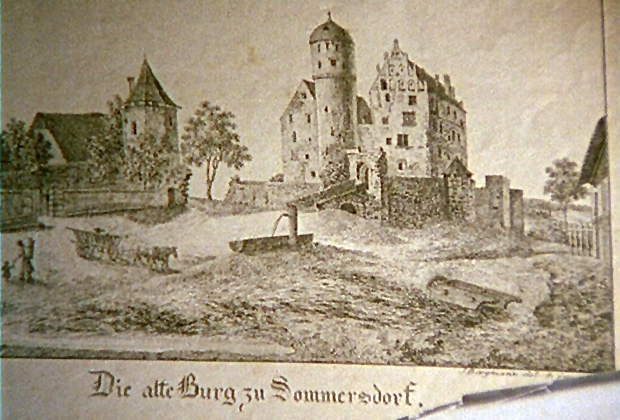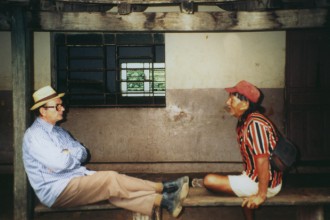Sommersdorf in Germany’s Middle Franconia looks like a knight’s castle straight out of a picture book. However, the Franconian idyl conceals a creepy secret, which is discovered, when the French army attacks the Prussians on a stormy evening in October 1806. Several perfectly preserved mummies still lie in their caskets in the castle’s cellar.
Details:
ZDF, 1994
Length: 45 minutes
Written and directed by: Jens-Peter Behrend, Eike Schmitz
Camera: Lars Barthel
Editor: Ellen Bader
Narrator: Gert Heidenreich
Commissioning editor: Gottfried Kirchner
German or English version
How could they have been preserved for so long? The allied soldiers, doing research in Sommersdorf, after the Second World War, attribute the mummification to high levels of radiation within the tomb. Or maybe it’s the dry breeze in the castle cellar, which preserves the mummies?
From the castle ruins in Sommersdorf, filmmakers Eike Schmitz and Jens-Peter Behrend follow the tracks of humanity’s preoccupation with immortality. Many different cultures believed in a life after death, through mummification of the body.
In Southern China, an autopsy is carried out on a female mummy, more than 2.000 years old, from a recently discovered monumental tomb. Wrapped in silk bandages, she was burred in quicksilver lye. The mummy helps the scientists find out further particulars about her health, and the reason for her death.
Pictures of Japanese monk mummies have an oppressive effect. They practiced a tradition of self-mummification – a long and painful procedure. Ascetic monks mummified themselves to death, by drinking varnish and saltwater.
In a closet of the University-College London, under the Parochial Church in East Berlin, in chapels in Bavaria’s Ansbach – the filmmakers discover mummies everywhere; their origin is traced back to different traditions. Historians, archaeologists and physicians contribute their knowledge to figure out the cultural and biological origins of mummification.
Arriving in the present time, at the end of the film, we meet Gunther von Hagens. The inventor of plastination and founder of “Aesthetic Anatomy”, tells us good-naturedly, how he cut his best friend into slices and plastinated him. Von Hagens would also like to be mummified through plastination. However, not in order to achieve eternity, but rather, “a kind of didactic immortality”.










